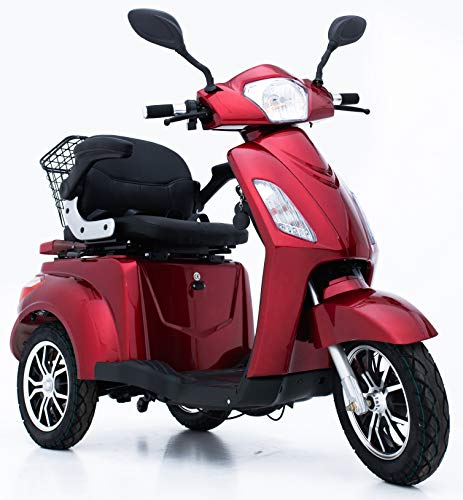Scooter Green Power
Scooters are a great, safe and easy way to travel. They are also eco green. However, it's crucial to do your research prior to purchasing one.
Scooters aren't as carbon-free as they appear. They have hidden costs. The process of mining and manufacturing the batteries that power electric scooters produces significant emissions. The environmental impact of transporting scooters from charging stations to places where riders take them is increased.
Battery Life
The battery is among the most important components of any scooter, and has significant impact on how green your scooter is. When the battery is dead, it releases toxic chemicals that can have a huge ecological and economic impact.
Electric scooters are extremely efficient in energy use, and consume a fraction of the electricity that cars consume when they travel the same distance. This reduces carbon dioxide and climate change, and it helps to reduce traffic congestion. They still produce a small amount when charging. If it is derived from renewable sources, it can make the e-scooter even more eco friendly.
In addition to this, many scooters have swappable batteries that can be used with other scooters in a fleet, reducing the need for companies to transport them to recharge. Some companies are also testing hyper-local energy production. Grids can make use of the power stored in batteries to balance demand and supply.
If you intend to make use of your scooter for longer excursions, then consider purchasing a larger capacity battery, or a spare battery that you can swap out. This will let you go further without stopping to recharge the battery as frequently. This is crucial when you live in an area that experiences harsh weather conditions. It is also a good idea to charge the battery before you store it for several weeks or months. Failure to do this may cause the battery to stop keeping a charge until you require it and can be a hassle and even dangerous.
Overall electric scooters have a much lower environmental impact than cars and other forms of transport. They produce fewer greenhouse gasses that contribute to global warming and use less raw materials to make. They can be powered by clean energy, which reduces their carbon footprint. When looking at the sustainability of a scooter, it's important to take into account its entire lifecycle. This includes the manufacturing, the energy required to charge it, and its disposal.

Design
The design of electric scooters can have a major impact on their environmental reputation. Scooters with regenerative brake systems, for instance they convert energy that would be lost otherwise into more battery life, allowing them to travel farther on each charge. Many scooters can be designed to travel shorter distances, which can reduce the number of trips to the vehicle required. And, unlike traditional vehicles, scooters emit no carbon dioxide during use.
However, it is important to consider the environmental effects of the entire lifecycle an electric scooter. This includes the extraction and production of raw materials, as and the disposal at the end of its life. The manufacturing of lithium Ion batteries is energy-intensive and can result in destruction of habitats pollution of soil and water, and greenhouse gases. In green electric scooter , the transportation and mining of raw materials could have a significant impact on the environment.
The inability to last is another major problem with scooters. The average scooter only lasts around a month or so on the streets before it is taken away. This could force scooter companies to extract even more aluminum and to engage in more resource-intensive processes such as shipping. Since most scooters are rented rather than owned by the owner, they need to be taken in, and then transported (often in vehicles) to recharging station when their batteries are exhausted.
Scooters can contain hazardous wastes that could cause harm to the public health and the environment. If they are not properly recycled the waste could end in rivers or landfills and cause harm to humans and wildlife.
Scooters are more beneficial to the environment as a whole than traditional vehicles. However, there are still some issues to be resolved before they can be deemed totally environmentally friendly. If all scooters were made from 100% recyclable material and the power source that drives them comes from renewable sources, they will be a carbon-free form of transportation.
Maintenance
The cost of electric scooters is lower than that of an ordinary vehicle. However, it needs routine maintenance. The primary component is the battery pack. It will need to be recharged regularly and replaced if it reaches the end of its life. The speed controller also plays a role in this as well. When this is faulty, it will affect the performance of the scooter.
If the scooter stops or stops while riding, this is typically a sign of a faulty battery pack. A malfunctioning fuse or battery charger could also be the cause. Check the LEDs on the charger to ensure they are green (charging) and not red (off). It is a good idea to recharge the scooter every time it's in storage, even when you're not using it.
A malfunctioning normally closed switch on the brake lever is a common problem. To check for this, disconnect the wire from the brake lever switch and connect the terminals in the controller's connector that the wire is disconnected from. If the scooter continues to run in a continuous manner, the switch may be malfunctioning.
Scooter services send people out to drive trucks and cars all the time, and they bring back any electric scooters that are out of juice. This kind of service can help them keep their fleet in good condition. It also allows them to charge the batteries before the next trip. However, a lot of people don't have this luxury and must replace their scooters when they are unable to recharge their batteries while on the go.
